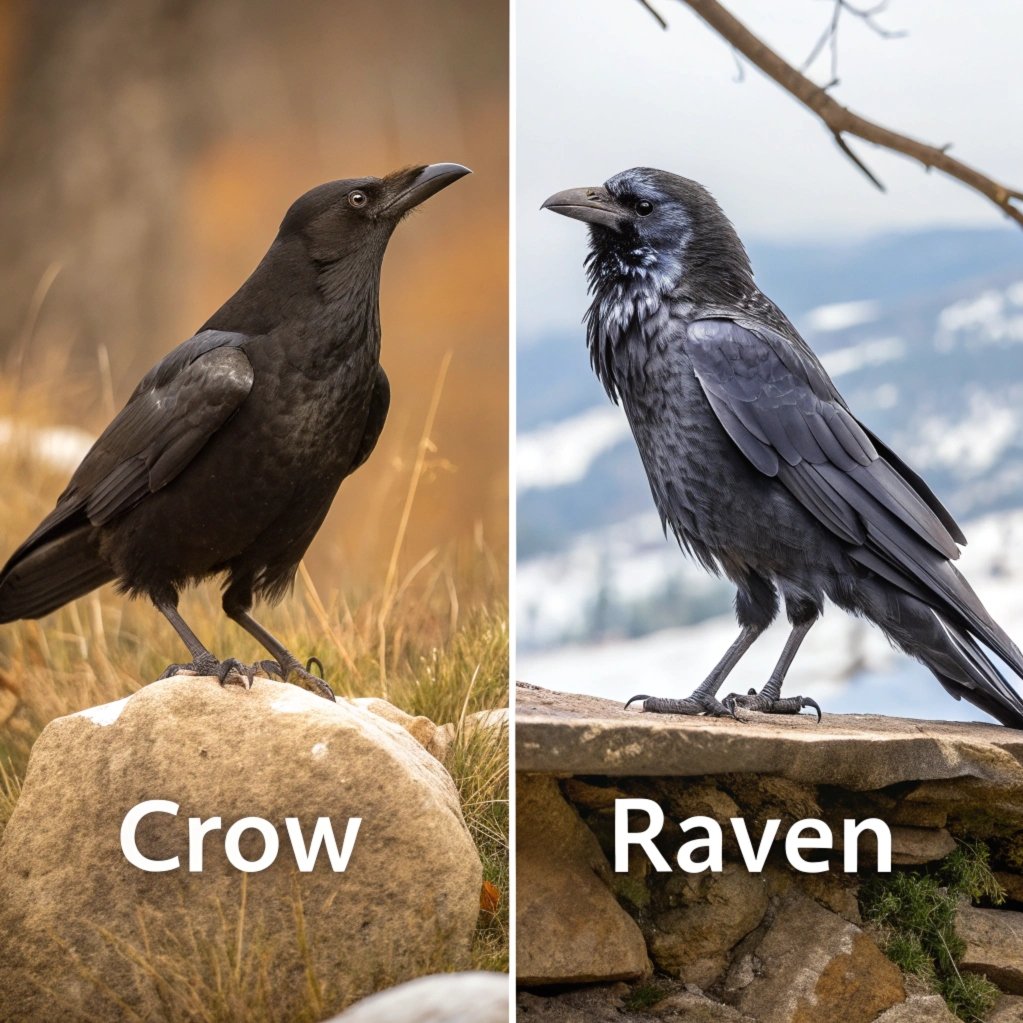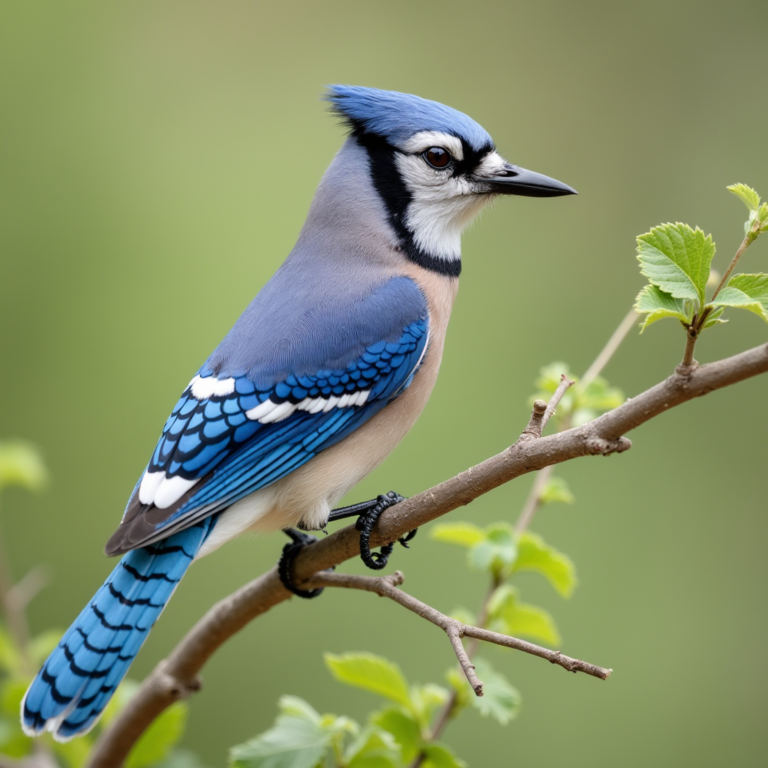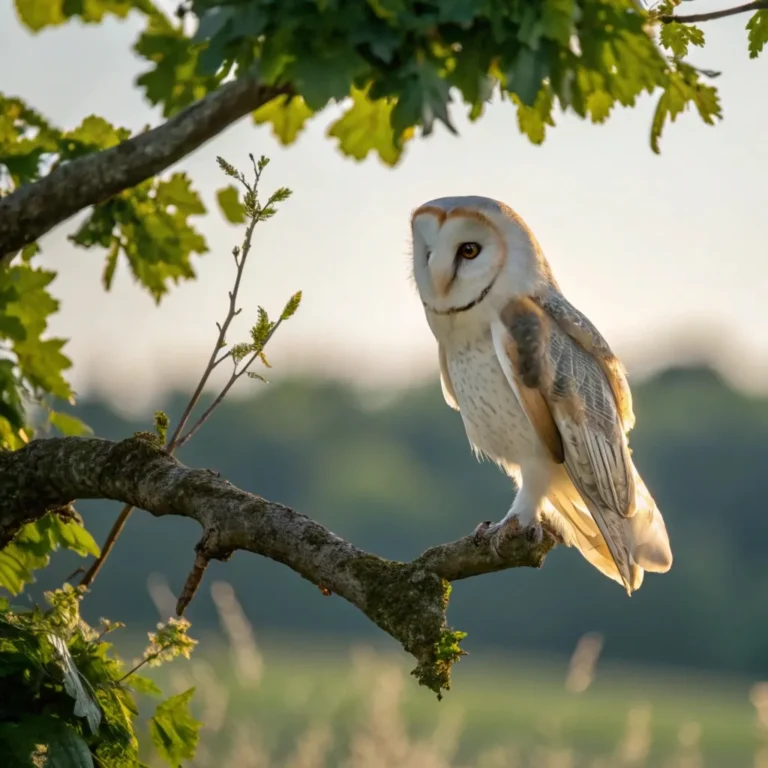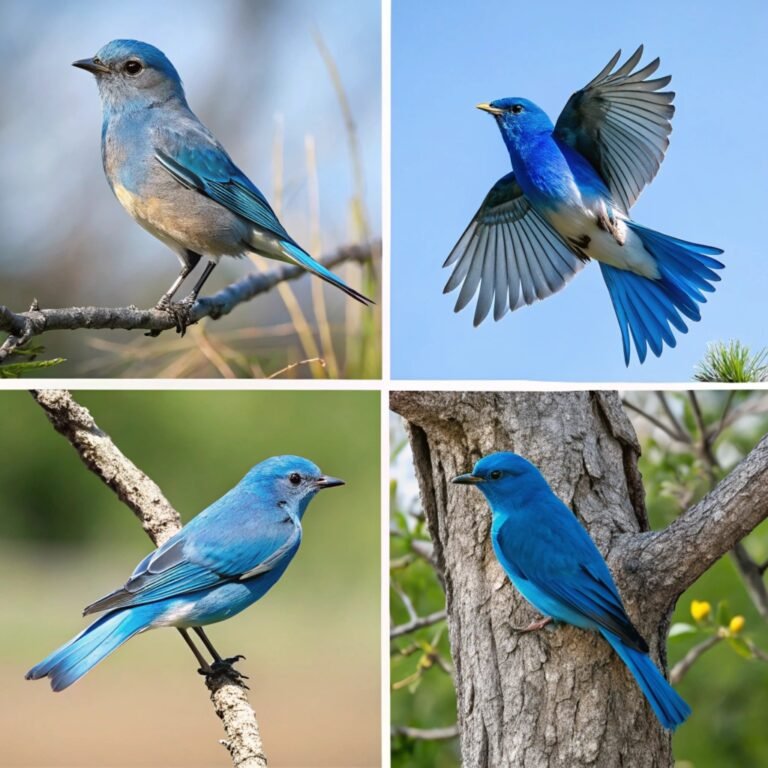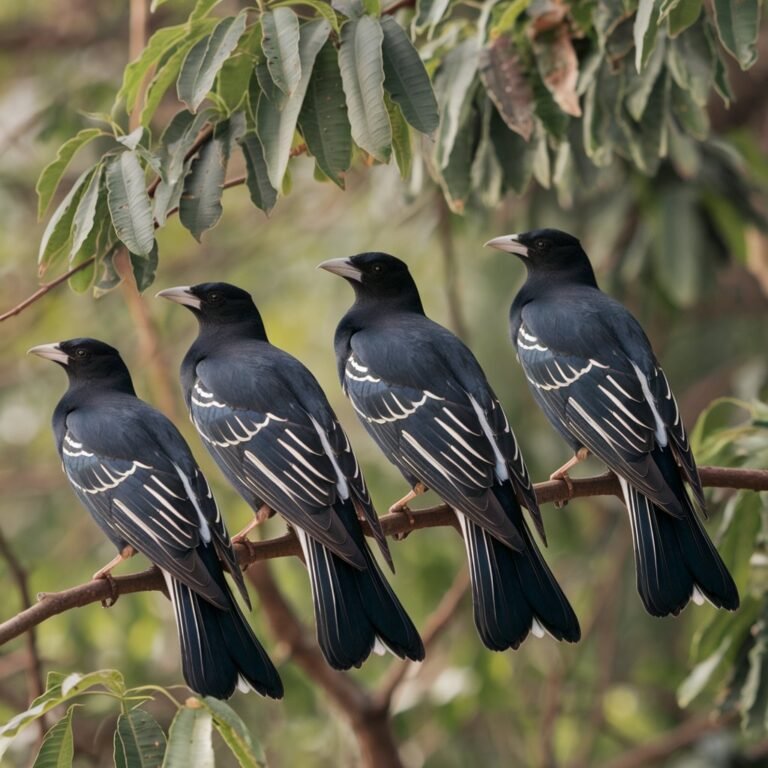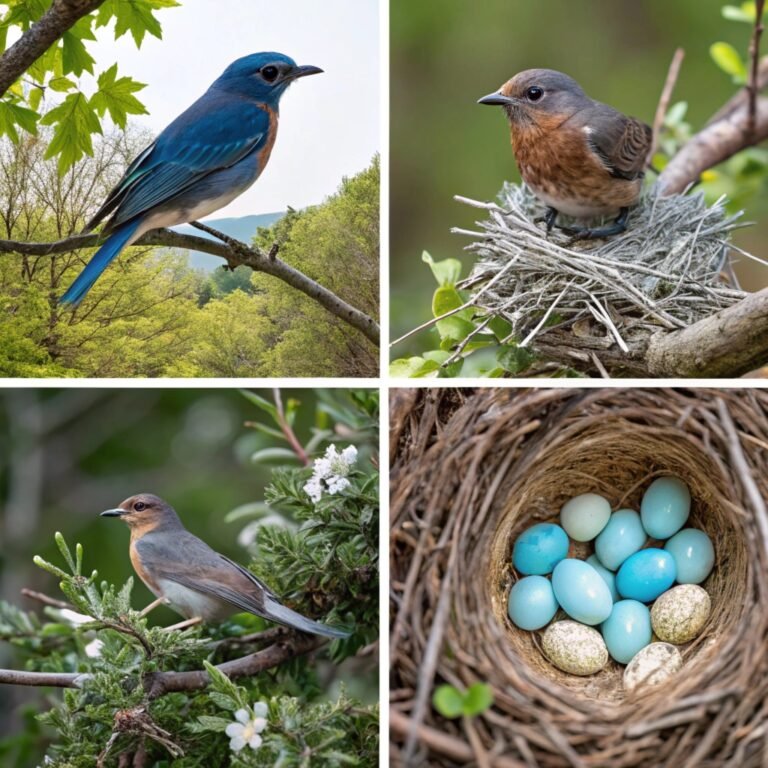Crow vs Raven: Distinguishing Between These Two Highly Intelligent Corvid Species
Crows and ravens, members of the corvid family, have long captivated human imagination with their intelligence and adaptability.
These black-feathered birds are often mistaken for one another due to their similar appearances, but they possess distinct characteristics that set them apart.
In this comprehensive guide, we’ll delve into the fascinating world of crows and ravens, exploring their unique traits, behaviors, and cognitive abilities.

Key Takeaways:
- Size Matters: Ravens are significantly larger than crows, with a length of 24-27 inches compared to crows’ 15-17 inches.
- Distinctive Calls: Ravens have a deep, croaky voice, while crows produce a higher-pitched caw.
- Tail Shape: Ravens sport a wedge-shaped tail, whereas crows have a fan-shaped tail.
- Beak Structure: Ravens possess larger, curved beaks, while crows have smaller, straighter beaks.
- Feather Appearance: Ravens have shaggy throat feathers, giving them a rugged look, while crows have sleeker plumage.
- Flight Patterns: Ravens are more likely to soar, while crows tend to flap their wings more frequently.
- Social Behavior: Crows often gather in large groups called “murders,” while ravens typically travel in pairs.
- Habitat Preferences: Ravens favor wilder, more remote areas, while crows are commonly found in urban and suburban settings.
- Problem-Solving Skills: Both species demonstrate remarkable intelligence, with the ability to use tools and solve complex puzzles.
- Memory Capabilities: Crows and ravens can remember human faces and hold grudges or form positive associations based on past interactions.
Size and Physical Appearance: The First Clue to Identification
When it comes to distinguishing between crows and ravens, size is often the most noticeable difference.
Ravens are significantly larger than their crow cousins, with an impressive wingspan of up to 4 feet and a body length of 24-27 inches. In contrast, crows typically measure 15-17 inches in length with a wingspan of about 2.5 feet.
This size difference is particularly evident when the birds are seen in flight or perched side by side. Ravens also have a bulkier, more robust build compared to the sleeker profile of crows.
Their larger size and heavier appearance give ravens a more imposing presence, which can be helpful in identifying them from a distance.
However, it’s important to note that size alone may not always be a reliable indicator, especially if you don’t have a point of reference for comparison.
The ecological impact of crows and ravens extends far beyond their impressive cognitive abilities.
These intelligent corvids play crucial roles in various ecosystems, contributing to biodiversity and ecological balance.
As opportunistic omnivores, they help control populations of insects and small animals, potentially reducing agricultural pests.
Their scavenging habits contribute to ecosystem cleanliness by removing carrion, which can help prevent the spread of diseases.
Beak Structure and Feather Arrangement: Subtle Yet Telling Differences
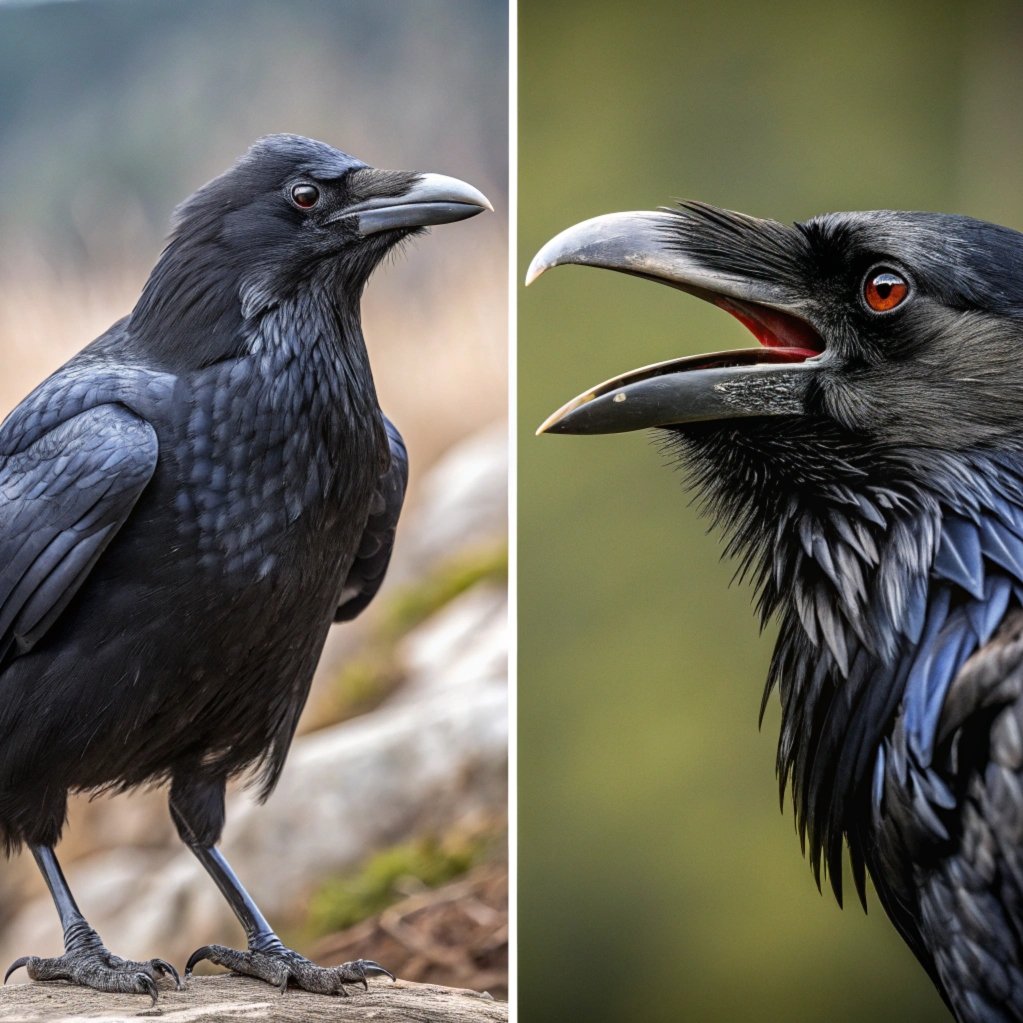
A closer examination of the beak and feather arrangement can provide valuable clues for differentiating between crows and ravens. Ravens possess a noticeably larger and more curved beak compared to crows.
This substantial beak is well-suited for their diverse diet and foraging habits. Additionally, ravens have distinctive throat feathers that form a shaggy “beard” or “ruff” around their neck, giving them a somewhat disheveled appearance.
This feature is particularly noticeable when ravens puff out their throat feathers during vocalizations or displays.
In contrast, crows have smoother, more streamlined throat feathers that lack the pronounced shagginess of ravens.
Their beaks are also smaller and straighter, reflecting their slightly different feeding strategies.
These subtle differences in beak structure and feather arrangement can be crucial in making an accurate identification, especially when observing the birds up close.
Tail Shape and Flight Patterns: Observing Birds in Motion
One of the most reliable ways to distinguish between crows and ravens is by observing their tail shape and flight patterns.
Ravens have a distinctive wedge-shaped or diamond-shaped tail, with longer feathers in the center that taper towards the edges.
This unique tail configuration is particularly noticeable when the bird is in flight or fanning its tail.
Crows, on the other hand, have a more rounded or fan-shaped tail with feathers of roughly equal length. In terms of flight, ravens are known for their acrobatic abilities and tendency to soar on air currents, often performing impressive aerial maneuvers.
They frequently engage in playful flight behaviors, such as barrel rolls and steep dives. Crows typically exhibit a more straightforward flight pattern with more frequent wing flapping.
By paying attention to these characteristics, you can often make a confident identification even when the birds are at a distance.
Vocalizations: The Distinctive Calls of Crows and Ravens
The vocalizations of crows and ravens provide another key method for distinguishing between these two species.
Crows are known for their familiar “caw” sound, which is typically higher-pitched and more nasal in quality.
Their calls can vary in intensity and rhythm, but they generally maintain a consistent tone. Ravens, in contrast, produce a deeper, more guttural sound often described as a “croak” or “gronk.”
Their vocalizations are generally lower in pitch and have a more resonant quality compared to crow calls.
Ravens also have a more diverse vocal repertoire, capable of producing a wide range of sounds including knocks, whistles, and even mimicry of other birds and animals.
By familiarizing yourself with these distinctive calls, you can often identify crows and ravens even when you can’t see them clearly.
It’s worth noting that both species are highly vocal and use their calls for various purposes, including communication within their social groups and warning of potential threats.
Habitat Preferences: Urban Dwellers vs. Wilderness Lovers
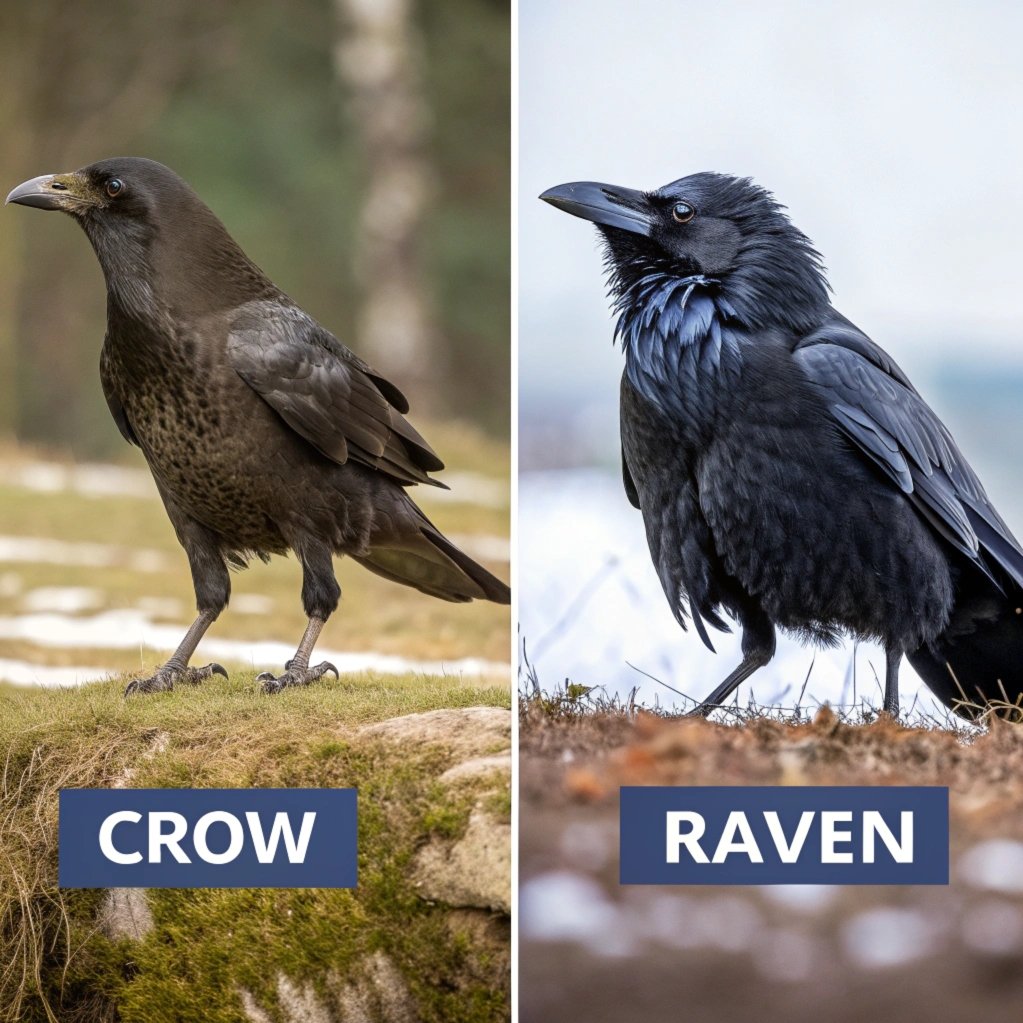
The preferred habitats of crows and ravens can provide valuable clues for identification and offer insights into their different ecological niches.
Crows are highly adaptable birds that have successfully colonized a wide range of environments, including urban and suburban areas.
They are commonly seen in parks, gardens, and city streets, having learned to thrive in close proximity to humans. This adaptability has made crows a familiar sight in many parts of the world.
Ravens, while also adaptable, tend to prefer more remote and wilder habitats. They are often found in forests, mountains, and coastal areas, generally avoiding densely populated urban centers.
Ravens are more likely to be encountered in national parks, wilderness areas, and rural landscapes.
However, it’s important to note that there can be overlap in their habitats, and both species may be found in similar areas, particularly in regions where their ranges intersect.
Social Behavior: Group Dynamics and Interactions
The social behaviors of crows and ravens offer fascinating insights into their different lifestyles and can aid in identification.
Crows are highly social birds that often gather in large groups known as “murders.” These gatherings can consist of dozens or even hundreds of individuals, particularly during roosting or feeding times.
Crows exhibit complex social structures within these groups, with strong family bonds and cooperative behaviors.
They are known to engage in communal roosting, share information about food sources, and work together to mob predators. Ravens, while also social, tend to be more solitary or found in smaller groups.
They typically travel in pairs, which are often mated for life. During the breeding season, ravens become territorial and may aggressively defend their nesting areas.
Outside of the breeding season, ravens may form larger flocks, particularly younger, non-breeding individuals.
These different social patterns can be helpful in distinguishing between the two species, especially when observing their behavior in the field.
Cognitive Abilities: The Remarkable Intelligence of Corvids
Both crows and ravens are renowned for their exceptional intelligence, placing them among the smartest animals in the world.
Their cognitive abilities rival those of great apes and in some cases, young human children. These birds demonstrate remarkable problem-solving skills, tool use, and the ability to plan for the future.
Ravens, in particular, have shown the capacity to solve multi-step puzzles and understand cause-and-effect relationships.
They can use tools to obtain food and even create tools from available materials. Crows are equally impressive, with documented cases of them using traffic to crack nuts and fashioning hooks from wire to retrieve food.
Both species exhibit social intelligence, recognizing individual human faces and remembering past interactions.
This cognitive flexibility allows them to adapt to various environments and challenges, contributing to their success as species.
Memory and Recognition: The Long-Term Recall of Corvids
One of the most fascinating aspects of crow and raven intelligence is their exceptional memory and ability to recognize individuals.
Both species have demonstrated the capacity to remember human faces and associate them with positive or negative experiences.
Research has shown that crows can hold grudges against people who have threatened or captured them, and can even pass this information on to other crows.
Conversely, they also remember humans who have been kind to them, forming positive associations. Ravens have similar abilities, recognizing individuals who have treated them fairly or unfairly in experimental settings.
This long-term memory extends to their social relationships within their own species as well.
Both crows and ravens can remember and recognize numerous individuals within their social groups, maintaining complex relationships over time.
This remarkable memory capacity plays a crucial role in their survival and social dynamics.
Crows and ravens also act as seed dispersers, aiding in the regeneration of plant species.
Feeding Habits: Adaptable Diets and Foraging Strategies
The feeding habits of crows and ravens showcase their adaptability and intelligence. Both species are omnivorous and opportunistic feeders, with diets that can vary significantly based on their habitat and available food sources.
Crows are known for their ability to thrive in urban environments, often scavenging from human refuse and adapting to a wide range of food types.
They are adept at opening containers, cracking nuts, and even dropping hard-shelled prey from heights to break them open.
Ravens, while also opportunistic, tend to have a more varied diet that includes a higher proportion of meat. They are known to scavenge carrion and may even hunt small animals.
Both species use their intelligence to solve food-related problems, such as using tools to extract insects from tree bark or caching food for later consumption.
Their diverse feeding strategies and ability to exploit various food sources contribute to their success in different environments.
Breeding and Nesting Behaviors: Family Life of Corvids
The breeding and nesting behaviors of crows and ravens offer insights into their family structures and life cycles. Both species are monogamous, often forming long-term pair bonds that can last for many years.
Crows typically nest in trees or on man-made structures in urban areas, building large, sturdy nests of sticks lined with softer materials. They often breed in loose colonies, with multiple pairs nesting in the same general area.
Ravens prefer more isolated nesting sites, often choosing cliffs, tall trees, or even abandoned buildings in remote areas.
Their nests are typically larger and more robust than those of crows. Both species exhibit strong parental care, with both males and females participating in nest building, incubation, and feeding of the young.
Interestingly, in many crow species, young from previous years may stay with their parents and help raise subsequent broods, a behavior known as cooperative breeding.
This family-oriented approach contributes to the complex social structures observed in corvid populations.
Lifespan and Mortality: The Life Cycle of Crows and Ravens
Understanding the lifespan and mortality factors of crows and ravens provides insight into their population dynamics and ecological roles.
Both species are relatively long-lived for birds, with individuals in the wild potentially reaching 10-15 years of age.
In captivity, where they are protected from predators and environmental hazards, they can live even longer, with some ravens recorded living up to 40 years.
However, mortality rates can be high, particularly for young birds. Predators such as hawks, owls, and larger mammals pose a threat, especially to nestlings and fledglings.
Human activities, including habitat destruction, collisions with vehicles, and persecution as perceived pests, also impact their populations.
Despite these challenges, both crows and ravens have proven remarkably resilient, adapting to changing environments and human presence.
Their intelligence and adaptability contribute significantly to their survival and success as species.
Cultural Significance: Crows and Ravens in Human Mythology and Folklore
Crows and ravens have played significant roles in human culture, mythology, and folklore across various civilizations throughout history.
In many Native American traditions, ravens are seen as powerful spiritual beings, often associated with creation myths and trickster tales. In Norse mythology, two ravens, Huginn and Muninn, were the companions of Odin, symbolizing thought and memory.
Crows have been associated with both positive and negative symbolism in different cultures. In some traditions, they are seen as harbingers of death or bad omens, while in others, they represent wisdom and intelligence.
The cultural significance of these birds has influenced human perceptions and interactions with them over time.
Their intelligence and adaptability have contributed to their enduring presence in human storytelling and symbolism, reflecting the complex relationship between humans and these remarkable birds.
Conservation Status: Protecting Corvid Populations
While both crows and ravens are generally considered common and widespread species, they face various conservation challenges in different parts of their range.
Habitat loss due to urbanization and deforestation can impact their populations, particularly for ravens that prefer more remote areas.
Climate change may also affect their distribution and breeding patterns. Some populations have been negatively impacted by persecution as perceived agricultural pests or due to conflicts with human activities.
However, their adaptability has allowed many populations to thrive, even in urban environments.
Conservation efforts focus on protecting habitats, reducing human-wildlife conflicts, and promoting coexistence. Research into their ecological roles and cognitive abilities continues to highlight the importance of these intelligent birds in ecosystems.
As we gain a deeper understanding of crows and ravens, it becomes increasingly clear that protecting these species is not only important for biodiversity but also for preserving some of nature’s most remarkable examples of avian intelligence.
FAQs
Are ravens larger than crows?
Yes, ravens are significantly larger than crows. Ravens typically measure 24-27 inches in length with a wingspan of up to 4 feet, while crows are usually 15-17 inches long with a wingspan of about 2.5 feet.
Can crows and ravens interbreed?
While crows and ravens are closely related, they are distinct species and do not typically interbreed in the wild. Hybridization is extremely rare and has only been documented in a few isolated cases.
Which is smarter, a crow or a raven?
Both crows and ravens are highly intelligent, and it’s difficult to definitively say which is smarter. They both demonstrate remarkable problem-solving abilities, tool use, and social intelligence. Some studies suggest that ravens may have slightly more advanced cognitive skills, but both species are considered among the most intelligent birds.
Do crows and ravens get along?
Crows and ravens often have a competitive relationship and may engage in territorial disputes. Crows have been observed mobbing ravens, especially during breeding season. However, in some areas, they may coexist without significant conflict.
Can crows and ravens mimic human speech?
While both species are capable of producing a wide range of vocalizations, ravens are more known for their ability to mimic human speech and other sounds. Crows can also mimic to some extent, but it’s less common than in ravens.

Hello, I’m Emily Price, the founder of Birds Affection. As a passionate bird enthusiast and spiritual seeker, I’ve always been fascinated by the symbolic meanings and mystical connections between birds and our lives. On this website, I share my knowledge and insights on the spiritual significance of various bird species, exploring their roles as messengers, guides, and teachers. Through my writing, I aim to inspire and educate others on the profound wisdom and beauty that birds bring to our world. Join me on this journey as we delve into the enchanting realm of bird symbolism and discover the hidden meanings behind these magnificent creatures.

